#jedi holocron
Text

It's WHAT day today!? Not me already feeling weird about working on two sketches to post the same weekend as that sketch I posted for the first time in months only to find out that Today is the Two Year Anniversary of The Day Dinluke Took Over My Brain.
(It's not 12AM yet, this still counts as a 12/18 post)
Anyway.

Been dying to do some nice proper "the staircase fic is firmly on my mind" sketches. This version of Luke actually shows up later in the fic and the shape/cut/color of his robes are also influenced by Padme's wardrobe. Din's look has appeared on this blog before and is super duper influenced by what we saw of Aq Vetina's residents in the flashback scenes. The, uh, holocron plays a smaller part than it looks but I bought a holocron at Disneyland and wanted to have fun with my new reference.
Have I posted about the staircase fic on the art blog? It is live and currently posting as Gravity Well on AO3.
#shirozora draws#dinluke#lukedin#skydalorian#din djarin#luke skywalker#grogu#the mandalorian#star wars#jedi holocron#story: the staircase fic#story: gravity well#I'M BACK WITH EVEN MORE SKETCHES IN THE FINAL HOUR OF THIS GLORIOUS DAY#THIS DECEMBER 18TH WHEN DISNEY WARS MADE THE MISTAKE OF PUTTING DIN AND LUKE IN THE SAME ROOM#MY CONCLUDING THOUGHT AFTER HYPERVENTILATING THROUGH THAT WHOLE EPISODE?#'SO GROGU HAS TWO DADS NOW'#REST IN FUCKING PIECES MY SANITY FOR THE NEXT TWO PLUS YEARS#WHICH IS WHY I AM POSTING THREEEEEEE WHOLE ASS SKETCHES THIS WEEKEND AFTER MONTHS OF WRITING DINLUKE FIC#LIKE I'M RUNNING OUT OF TIME LIKE IN THAT HAMILTON SONG#FFFFFFFFFFFFFFFFFFFFFFFFFFFFFFFFFFFFFFFFFFFF
2K notes
·
View notes
Text

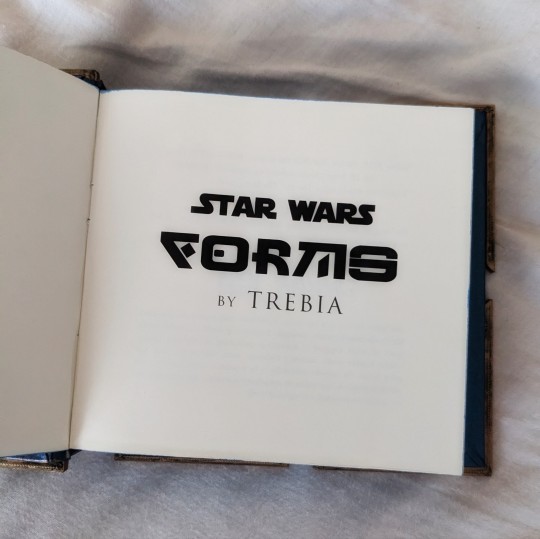

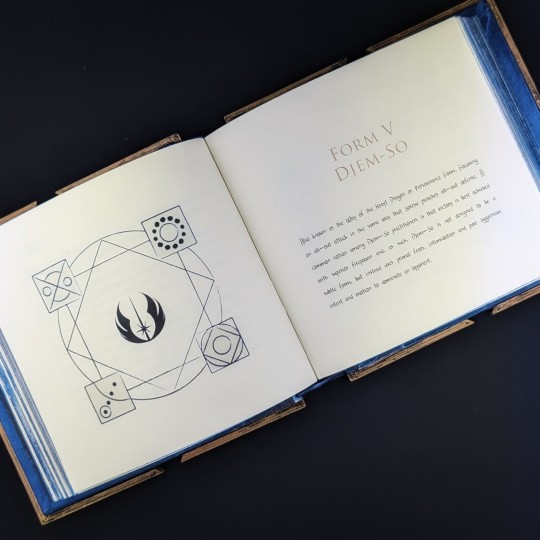

Binder's Note for Forms by Trebia
How Forms fits in the long tradition of Star Wars fanfic.
My hope is that this project captures a snapshot in time from Star Wars fandom het shippers between December 2015 and December 2017, before the franchise confirmed any emotional intimacy—if you can call it that— between Rey and Kylo Ren in Star Wars: The Last Jedi (2017).
Trebia, then aged 24, wrote and published the first chapter of Forms on Archive of Our Own on December 18th, 2015—the exact release date of Star Wars: The Force Awakens. When posting this first chapter, Trebia noted, “I’m just working off of memory from the one viewing I saw last night.” The entirety of the fanfic was completed and posted an exact month later, making this fic historically significant in Star Wars fandom as one of the earliest published “Reylo” stories.
A serialized novella that was churned out in an astonishingly short time frame, Forms is notable for predicting many elements of The Last Jedi (2017) and The Rise of Skywalker (2019), including the Reylo Force bond, Rey walking away from her training with Luke Skywalker, Kylo Ren pleading with Rey to join him, and Kylo Ren pushing his Force energy into Rey to save her life.
Throughout the story, Trebia mashed new and old Star Wars elements together—characters like the Mandalorians and Admiral Daala, settings like Illum and Kuat—evincing her fondness for the Galaxy Far, Far Away. Forms has classic tropes from this franchise, like stealing a uniform to go undercover in an enemy base and the forced proximity of a “Slow Boat to Bespin.” Present in Forms are scads of fan theories from between the release of The Force Awakens and The Last Jedi. These included the theory that—echoing a Legends plot line from Dark Empire (1991) where somehow Palpatine returns and Luke Skywalker joins the dark side to try and take him down from the inside—Kylo Ren had strategic reasons for his apprenticeship to Snoke. Like many Reylo fan-works set in-universe, Trebia lends justification to his many antisocial acts, part of shipper efforts to make the character more self-relevant and sympathetic.
Forms weaves in tantalizing threads that were tossed around by fans and concept artists but ultimately not pursued, including Dark Rey, Stormpilot (Finn/Poe Dameron), and Rey's saberstaff. Trebia even predicted the Kuat Drive Yards plot line started in The Last Jedi (Rose Tico’s contempt for weapon's manufacturers on Canto Bight) and continued in the abandoned Episode IX: Duel of Fates script by Colin Trevorrow. Forms also addresses loose ends that probably should have been covered for a more cohesive nine film saga, like the Chosen One prophecy and direct interaction between Anakin Skywalker and Kylo Ren.
No discussion of Forms can be complete without also placing it in the context of Star Wars fandom in 2016. Reylo was a fringe pairing that made intuitive sense to many Star Wars fans, particularly women; however, prior to The Last Jedi, the ship was dwarfed by the popularity of slash ships like Finn/Poe and Kylo Ren/Hux. At the time, many fans theorized that Rey was Luke Skywalker’s long-lost daughter, making her Ben Solo’s first cousin, making Reylo an incest ship.
As noted on the Fanlore wiki, the tags on this fic changed over time. In addition to “Riding the bus to hell either way” Trebia joked with tags like “Possible incest?” and “Not incest until proven guilty in the court of law.” Following the release of Star Wars: The Last Jedi, Trebia celebrated by replacing those tags with a celebratory “IT AIN’T INCEST.”
The story's strong influence in early Reylo fandom reflected a hunger for more Star Wars romances about the pull between light and dark. After all, the sequel trilogy did not set up Kylo Ren as a horned, alien-appearing monster or a wrinkled geezer. Unblemished by the ravages of the dark side, Kylo Ren was depicted with pillow lips and a fabulous, voluminous coiffure unencumbered by his helm (which really should have flattened it to his scalp.) The groundwork for a lightsider/darksider romance was previously explored in other Expanded Universe stories. At the forefront of these were watered down lightsider/darkside romances like the tepidly written romance between Luke Skywalker and former Palpatine agent Mara Jade. Given Mara Jade was hardly a champion of the dark side, there was no risk of corrupting Skywalker. But the Expanded Universe also boasted stories that played with this dynamic, like the twisted connection between Fable Astin and Jaalib Brandl by Patricia A. Jackson for the Star Wars Adventure Journal (1994), the conflict between Jaina Solo and Zekk in Kevin J. Anderson's Young Jedi Knights (1996),or the passion between Darth Revan and Bastila Shan in Star Wars: Knights of the Old Republic (2003). In this respect, Forms and the rest of the Reylo fan fiction oeuvre continues the grand fan tradition of Star Wars villain fucking.
“Darksider and lightsider conflict is one of the most fascinating points of Star Wars,” Trebia said in 2016, when interviewed by Spencer Kornhaber for The Atlantic. “Rey and Kylo represent the fight to find the balance.” Yet, at the time, the fledgling “Reylo” ship was abhorred by affirmational Star Wars fans who despised the emphasis on shipping with a female gaze, as well as scorned by media commentators who found the ship to be “problematic.” In male-dominated, established fan spaces like Reddit and Jedi Council Forums, discussion of Reylo was effectively banned by moderators through the freezing of threads. In other fandom spaces like Twitter and Tumblr, discourse about Reylo mirrored larger purity culture. The ship became a convenient target for alt-right misogynists, and also for anti‑shippers concerned that the ship “romanticized abuse.” Productive and unproductive debate arose around media consumption construed as agreement or approval, whether a sympathetic Kylo Ren lends people to give more latitude to real-life white right-wing men with anger management problems (or if it's the other way around), and if shippers can tell the difference between a fictional antihero and the same dangerous thing in real life. Critiques of Reylo fandom also included the implicit racism inherent in the sidelining of John Boyega’s heroic character Finn in favor of white whiny fascist Kylo Ren. (It did not help that 2016 also saw the election where white American women voters decided to displace a competent Black man with a white whiny fascist.)
In the September 2020 issue of the Journal of Fandom Studies, Andrea Marshall notes that Reylo “fan fiction acts as a locus of resistance to gendered oppression as feminist authors construct selves that critique the source material and the fandom for gendered oppression within tropes and attitudes.” By having Rey actually interact with and befriend a woman other than Leia, Forms already improves on the source material. It's a delight to see Forms depict older women over age fifty who are plot-significant and interact which one another, if only because Star Wars movies are fairly gender regressive. On the other hand, Rey's strategy to convert Kylo back to the light is to uh, suck the badness out of him. It's Padmé Amidala logic—sure, he arranged the wholesale slaughter of an entire village, but he can also deftly finger you to orgasm! Granted, Star Wars is infamously a franchise of excuse making, where really shitty dudes manage to turn it around and do the right thing at the last minute. Forms also doesn't push all that hard to actively resist the neo-fascist allegory in the sequel trilogy, particularly in Trebia's appendix, which dissatisfactorily explains that all of the First Order war criminals in the story ended up as instructors in military academies. (Who would even hire them, Albus Dumbledore?!)
Fics like Forms led to “ship wars” discourse, which led to the publication of ozhawkauthor's “The Three Laws of Fandom” meta essay on January 1st, 2016. “Laws” is a bit of a misnomer since there is no enforcement body; the essay is more of a request for courtesy in fandom spaces. The laws were also meant to apply specifically to shipping, not fandom or media criticism as a whole. “It’s not up to you to decide what other people are allowed to like or not like, to create or not to create,” wrote ozhawkauthor. “That’s censorship. Don’t do it.”
For fans conscious of fandom history and the impact of censorship in spaces like FanFiction.net and Livejournal, ozhawkauthor's guidelines—(1) Don't like; don't read, (2) Your ship is not my ship, (3)Ship and let ship—felt intuitive. This is reflected in spaces like my bookbinding guild, Renegade, which—similar to Archive of Our Own—takes a hands off approach to policing content. This did not prevent widespread handwringing about Reylo content. Star Wars fan ughwhyben reflected on the “gigantic fandom that is suddenly experiencing a renaissance, where an influx of mainstream folk are trickling into (or running into) the fic side for possibly the first time right now and don’t have this training. It’s like we’re flickering back and forth between the modern evolution of fic side fannish culture and what things were like in, for example, 2001 when I first stumbled in.”

Decades ago, in May 1981, Lucasfilm reacted to the publication of “Slow Boat to Bespin” by Anne Elizabeth Zeek & Barbara Wenk by declaring a ban on smut in fan fiction. I've included in the errata of this binding a letter from 1981 written by the Star Wars fanclub president to circulating fanzines threatening legal action. While slash was also caught in this net—disproportionately targeted given non-explicit gay romance was not okay even though Star Wars has non-explicit het romance—it was this fairly tame (by fic standards) heteronormative fic, featuring Han Solo and Princess Leia, that signaled to Lucasfilm that smutty fanfic was no longer on the fringes and now needed to be addressed to protect the “wholesomeness” of the franchise. Subsequently, fanfic writers had to make a conscious decision to flout Lucasfilm’s policy and go forth with propagating their smut.
And, in 2016, of all the ships in all of fandom, it was the Reylo Star Wars pairing, featuring this specific heteronormative female power fantasy (of being able to leash a villain by the dick to drag him back to the light) that led to a communal reaffirmation of these fandom norms. In her interviews with the The Atlantic, Trebia directly quotes from the Three Laws of Fandom, endorsing “ship and let ship” as a basis for creating Reylo fanworks. “I am fully involved in the garbage compactor that is this pairing, and I love it,” Trebia said. “No matter what way it goes, I will stick with it.”
After studying early romance novels from the late 1600s and early 1700s, Ros Ballaster observed a polarity between didactic love fiction and amatory fiction. Didactic love stories are sweet—aspirational, moral, and idealized—while amatory fiction is spicy—erotic, transgressive, untethered from social sanction. We do see representations of didactic love in Reylo fan fiction, particularly in contemporary romance “Modern AUs” like Ali Hazelwood's The Love Hypothesis (2021)where the Kylo's homicidal Sith rage is sanitized to a more socially-acceptable grumpy academic brooding. One can comfortably bring Adam Carlsen, Ph.D home to meet Mother. But certainly, the majority of Reylo fic written by fans gravitate towards and come with the self awareness of the amatory. For one, Trebia loudly proclaims in her Chapter Two author note: “MORE TRASH FOR THE TRASH GOD.”
Discourse over the “morality” of Reylo fan fiction tends to overlook the distinction between the didactic and the amatory. As compelling as the idea of a “Force dyad” is in fantasy, this relationship is not meant to be aspirational in a literal sense. Yet, readers of Reylo fiction were and continue to have to defend their interest in the archetype with disclaimers—yes, it's trash, yes, I know it's problematic—while men in fandom are not held to the same standards when it comes to “problematic” media they consume or enjoy, whether it's a Michael Bay blockbuster film or male-gaze pornography.
As Deborah Lutz notes, “The Dangerous Lover Romance” is a centuries old, conventional way to represent erotic desire and romantic love. The “sublimely tormented Byronic hero” is hardly groundbreaking, to the extent that Rian Johnson's depiction of Reylo in The Last Jedi subverts the trope—at the end of the film Rey isn't enchanted, she's repulsed. The same way Star Wars replicates Joseph Campbell's Hero's Journey monomyth, Reylo stories like Forms reflect the broad appeal of the “how-the-turntables” Dangerous Lover romance—where the woman protagonist, initially subjugated by the debased, restless misanthrope, ends up subjugating him through her strength of will and the power of love. Trebia's Kylo even sports malevolent scars like so many Gothic male romantic leads before him—always on the face. In the Gothic romance, the heroine accesses socially undesirable aspects—power, rage, craving, desire—as expressed by her double, the Dangerous Lover. His presence in the story provides a basis for her disinhibition. The Reylo ship follows a well-trodden cultural script of transgressive female desire.
Forms the fan fiction novella is a notable cultural artefact reflecting a distinct period of time in Star Wars fandom. At the time, Reylo fanfic held all the promise of improved representation for women characters, crossed with the instinctual, regressive insistence that maintains a white male character in the forefront. Reylo fan fiction produced in early 2016 also led to the reification of anti-censorship values in fandom. Seven years later, a fandom that was once derided has gone fully mainstream, as fic writers like Ali Hazelwood, Ashley Poston, and Thea Guanzon top traditional publishing bestseller lists. What Trebia knocked out, hours after her introduction to the characters, is now it's own Star Wars literary tradition.
#fanbinding#bookbinding#reylo#reylofanfic#fanfic binding#ficbinding#star wars history#holocron#jedi holocron
42 notes
·
View notes
Text

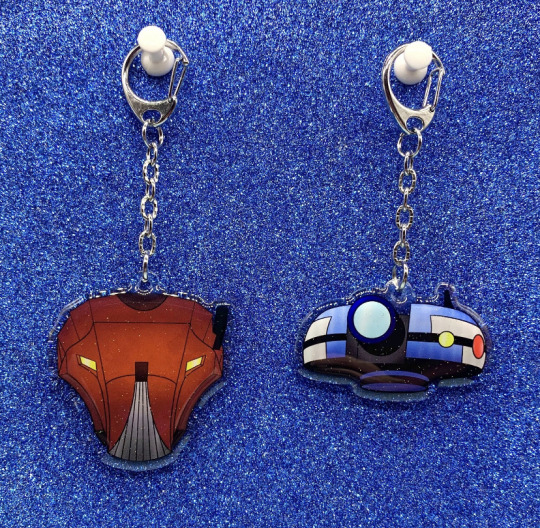
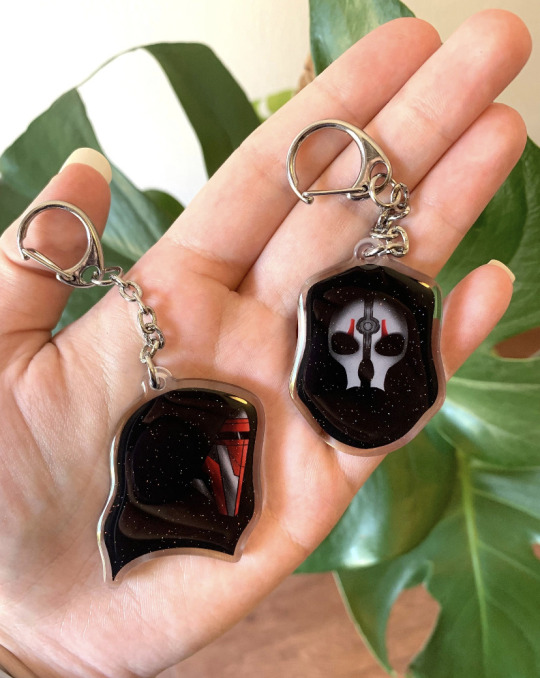
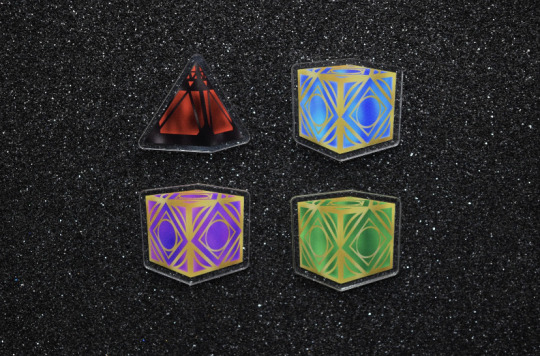

Everything in my shop is 35% off now through the end of March 2024! This includes all Kotor merch ✨
http://www.etsy.com/shop/thewaywardpin
#kotor 2#kotor#knights of the old republic#darth revan#darth nihilus#hk 47#t3 m4#jedi holocron#holocrons#acrylic charms#enamel pins#the ebon hawk#star wars#etsy#small business#kyber crystal
9 notes
·
View notes
Text
Between my love of Star Wars and my love of tabletop games, I've started a new little venture; holocron dice!
They were fun to design, and I hope that people who share my interest will enjoy them just as much as I do.
https://www.shapeways.com/shops/citadel-reproductions
#star wars#holocron#dice#dnd dice#dnd#dungeons and dragons#dungeons & dragons#jedi#sith#jedi holocron#sith holocron#d&d
10 notes
·
View notes
Text

Soopan and Cad play a game of chance.... and then the cube turns into a Holocron? This will make zero sense without context, but it illustrates a scene from my fanfic "Figment" in chapter 3.
Soopan is Cad's childhood bestie. I believe this is still canon.
Read "Figment" on AO3 <-click
*** EDIT: Chapter 3 is out now!
xInAmberCladx's Fanart Archive
#cad bane#young cad bane#soopan#cad bane's best friend#star wars chance cube#jedi holocron#fanart#fanfiction#fan illustration#Soopan is a lil' round boy
24 notes
·
View notes
Text

Ah. Yes!
The Great Holocron!
#personal stuff#dougie rambles#what#Obama prism#holocron#shitpost#executive shutdown#analog horror#jedi fallen order#Star Wars#my poor attempt at a joke#no context#OMABASPHERE#Jedi Holocron#sith holocron
3 notes
·
View notes
Text


Boy, does this outfit have details... Anyways! This goes with this Trilla drawing I made a couple weeks ago; I'll hopefully have Merrin's finished soon to complete the set ✨ Edit: she's here ~~
#yeah i know jfo's holocron is greener but that didn't match the vibe so blue it is (?)#star wars#jedi fallen order#cal kestis#bd 1#jfo#star wars fanart#sally draws#2024 art
72 notes
·
View notes
Text
not a single day passes where I don't think about the implication of legends(?)-comics jedi master Vima-Da-Boda
she *has* to have been in her prime during the clone wars, which puts her right into the time frame of anakin 'stress ulcer over my secret wife's secret pregnancy' skywalker.
why am i saying this?
because this woman, a jedi master from a *geneological jedi dynasty*, also got pregnant, had a whole daughter and TRAINED HER AS HER OWN PADAWAN (the daughter then wdnt off and fell and got herself killed but thats besides the point)
what i'm saying is that between Vima (and the whole Sunrider Dynasty tbh) and Yula Braylon (who hid her child but Yoda explicitly states that they would have helped her had she told them) and the several other jedi with close family bonds in and outside the order WHY do people keep insisting that the jedi were anti-family hardliners?
the jedi order, at least in legends, has *always* allowed its members to marry and procreate if they choose to. you can even train your own children! it happens all the time!!
ki-adi mundi has five wives and idk how many children, plo koon's niece is a jedi, adi gallia and stass allie are cousins and both became high council members, vima trains her own daughter as her padawan and yula could have announced arath as her kid no problem.
and that is not even going into jedi families in the old/high republic times (remember, the order's most famous grandmaster, nomi sunrider, became a jedi at 30 after her already jedi husband was killed and she too had a daughter which she trained as a padawan)
also, you know, canon is free real estate anyways.
but for those who are so hellbent on saying that the jedi are anti-marriage/family hardliners, no they are not & they never were.
i hope that helps 👍🏼
#im not saying this to discredit anyone who wants to play with the concept of a vow of celibacy/non-attachment jedi order#i'm just saying that thats not what the source material implies#you know you're free to do whatever you want in fic 🤷🏻♀️#i just am a staunch defender of the jedi order being quite a bit more open about things than large parts of the fandom think it is#like. what reason could there POSSIBLY be in-universe for someone to not just grab the next best nomi sunrider holocron#and have the recording of THE grandmaster herself tell anyone off that tries to go 'all familial bonds are attachment' or whatever#seeing as the sunrider line kept producing jedi over literal milennia i think their existence alone should shut up any naysayers#but whatever#i think about the sunriders way too much tbh#random boli thoughts#star wars meta#me writing#jedi order#the jedi
46 notes
·
View notes
Text
Oh dear, I am having THOUGHTS again about the likes of Yoda and Obi-Wan hiding while Cal was not...
#star wars jedi: fallen order#that damn holocron cere gives cal at the start of JFO keeps poking at me#poke poke poke#let cal be angry about a thing or two dammit
34 notes
·
View notes
Text
felix being referred to more or less exclusively as "your soldier" in-game speaks to how little the writers put into his character beyond his noggin full of sith secrets & his relationship with the consular; still, i do find it kind of sweet and funny, in a way. he's not a republic soldier, not even your personal bodyguard; he's your soldier. the consular is a small nation-state in and of herself
#accurate.#felix iresso#swtor#jedi consular#open tags for My Rant:#going back through rishi and doing the cute little holocron quest got me brooding - as i often do - on my best boy felix#that the writers could not think to give him anything in KOTXX that wasn't Torture Angst is deeply shitty but a little understandable.#all the other consular comps kind of have a way forward that isn't consular-related when the consular goes away#nadia has the jedi. zenith has balmorra. tharan has his old illustrious career. qyzen has little baby clan and also his religious directive#meanwhile felix isn't involved with your order or a supergenius or a politician or even someone with a lifelong goal#he was a guy doing his best at a dead-end job that turned into a far more enjoyable but still lowkey dead-end job#i would argue they could (should) have sent him to ossus but i can see them balking because Doc was already there#that's a little narratively redundant especially bc Doc has an extremely useful set of non-martial skills you would want to center#when telling a story about survival and persistence against the odds like with ossus#(also he was in the group of companions second-closest in proximity to the emperor in base game)#HOWEVER.#because i am immensely sexy and cool and have a huge brain i think i've cracked it#the way to give felix a compelling story post-consular is to put him the fuck in charge.#no longer your soldier or anyone's. his own. maybe even in charge of a large group of people in need of someone to follow#considering he used to be really good at that#a group like...idk...maybe the rest of the people incarcerated on his prison colony?#much to think about.
61 notes
·
View notes
Text
How am I supposed to go to sleep when there are mutuals (and more) to boop???
29 notes
·
View notes
Text
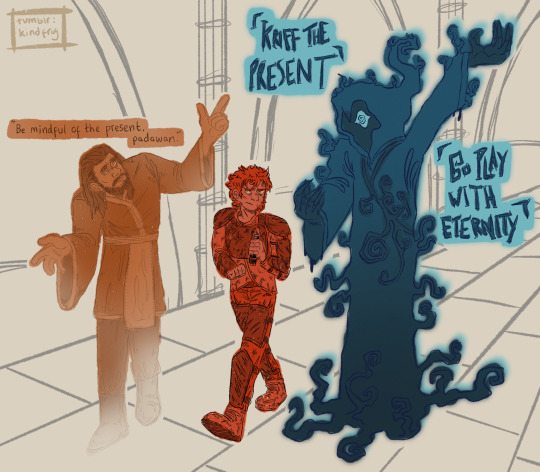
inpired by the fic A Variable Star by twigcollins on ao3 (based on a scene from chapter 22)

This is my second time reading this fic and I 100% recommend it if you’re a fan of obi wan kenobi and canon divergent AUs


#Star Wars#obi wan kenobi#mandolorians#sith holocron#qui gon jinn#a variable star#fanart#ao3#kenobi being a smashball clobber of Sith Jedi and Mandolorian culture/traits is my fav running gag in this fic
27 notes
·
View notes
Text


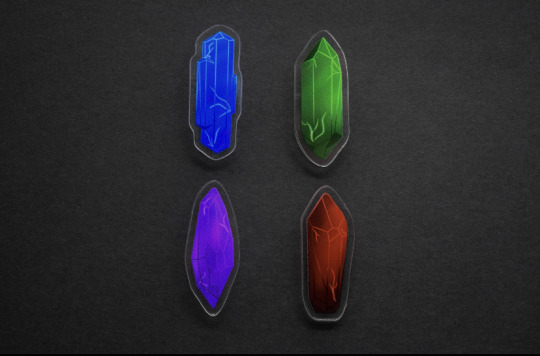



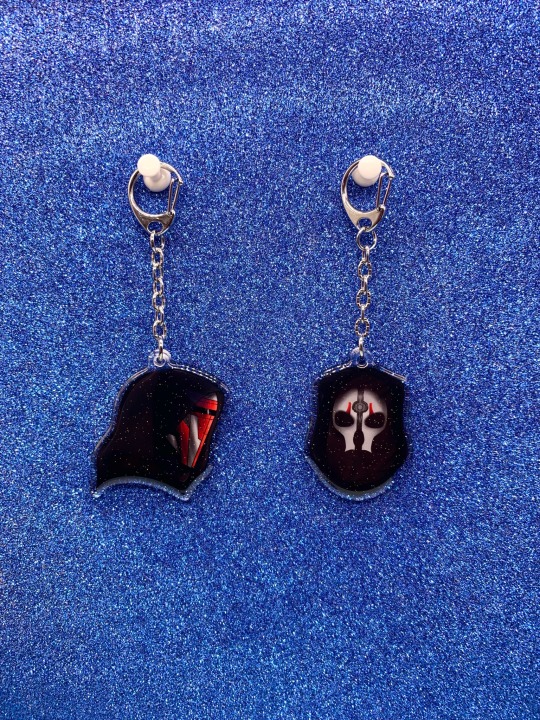
Black Friday Sale!!
get 40% off everything in my shop until midnight on Sunday, November 27th (CST)
Includes all pins and all my kotor merch 💜
(click or tap photos for higher quality)
Etsy
#knights of the old republic#kotor#t3 m4#hk 47#the ebon hawk#jedi holocron#kyber crystal#darth revan#enamel pins#etsy#kotor2#star wars#darth nihilus
123 notes
·
View notes
Text

it’s hard to let go sometimes
#ow#i just want her to be happy#holocrons are basically jedi phones to me#ahsoka tano#ahsoka fanart#anakin skywalker#tcw#sw#star wars#swr#sw rebels#the clone wars#sw fanart#star wars fanart#sabeldraws
568 notes
·
View notes
Text
merrin post jedi: survivor endgame
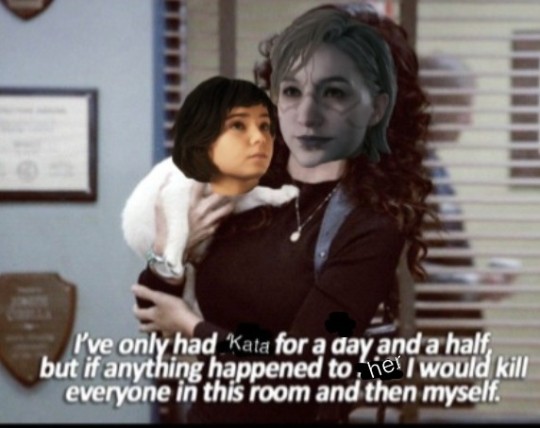
#jedi survivor#jedi survivor spoilers#merrin#kata akuna#accidental child acquisition#but merrin is thriving she loves acquiring new people to take care of#remember that time she tried to kill cal#and then 10 mins later was like “actually yeah ill help you find the holocron and fly on your ship and be bffs”
105 notes
·
View notes
Text
"Why The Last Jedi Isn't Just Bad - It's Toxic" by M. Krasava
DISCLAIMER: This editorial was originally published on Scavenger's Holocron, a sadly-now-defunct Star Wars news site. I feel like it's a tragedy to have it deleted from the Internet and only accessible to dedicated parties who know about it via the Wayback Machine, so I'm reposting it here as a form of greater preservation/availability.
Currently being regarded as the most controversial Star Wars film to date, fans of the popular franchise seem to have settled into two groups: this is either the best Star Wars film ever made, or the worst. Cinematically speaking, the movie has stunning visuals and a great cast of actors, but that’s not the problem.
The problem is that while The Last Jedi is being branded as the most feminist Star Wars film to date, its “feminism” seems like a cheap marketing ploy to appeal to a wiser audience and downplays some of the key problems within the film itself: it’s built on a foundation of sexism, misogyny, and racism. In other words, if you’re anything other than a white male, this film isn’t made for you.
And director Rian Johnson hasn’t exactly been shy about his opinion regarding the film’s white male villain, Kylo Ren. Rian told Empire Magazine that, “We can all relate to Kylo: to that anger of being in the turmoil of adolescence and figuring out who he’s going to be as a man.”
The only problem is that we can’t. Despite Rian’s insistence that this film is about the “transition from adolescence into adulthood,” Kylo Ren is already a well-established adult with a history of bad choices. We know from the canon Star Wars novel Bloodline, written by Claudia Gray, that Kylo Ren was at least 23 years old when he destroyed Luke’s Academy. At this point, he’s already an adult capable of making his own choices.
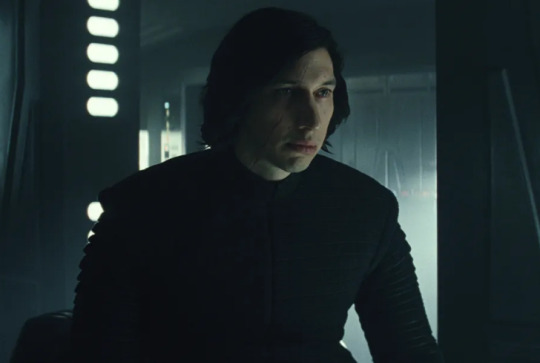
The film reveals that the final push towards the “dark side” was when Ben Solo awoke to see Luke standing over him with his lightsaber while he was sleeping. Without considering the possibility of a miscommunication, Ben Solo brought the roof down on the last Jedi, and then systemically went about converting or eliminating the rest of the students in Luke’s school before burning it to the ground. From there it can be presumed that he officially took on the role of Snoke’s apprentice, dubbing himself Kylo Ren as he joined the ranks of the First Order.
The problem is that it doesn’t matter. There’s nothing relateable about being a white adult male who decides to sign up with a Nazi organization and the very premise that we should try to have sympathy for such a character is chilling, especially when you consider that he murdered Han Solo not more than a week prior in film time.
(PUTTING THE REST UNDER A CUT)
But there’s another element to Kylo Ren that makes him harder to relate to. He comes from a place of privilege in society. Ben Solo was born to two war heroes, and while those might be big shoes to fill, there’s nothing that would indicate that Han and Leia were terrible parents to their son. In The Force Awakens, Leia admits that she sent Ben to train with Luke because she feared Snoke’s growing influence on her son (turns out, she had a right to be concerned). In Chuck Wendig’s canon novel, Empire’s End, from the Star Wars: Aftermath series, we see Han excited, if not a little daunted, about the possibility of becoming a father.
In other words, there’s nothing relateable when you think about a wealthy white male growing up sure of his place in the world and deciding to leave it all behind to join a fascist organization.
Compounding on this, there is someone who is relateable: Finn. Finn was not born from a place of privilege. If anything, we still know very little about Finn’s origins aside from the fact that he was abducted from his parents and raised to be a Stormtrooper. Despite years of conditioning and being ranked as the top cadet in his class, Finn was able to maintain his sense of self and when it came down to his first battle, he decided not to shoot and kill an unarmed villager.
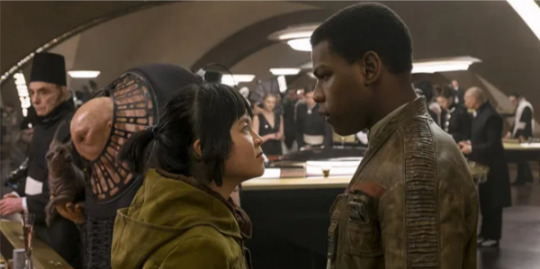
This is the character that most people should be able to relate to. Finn is a character that isn’t sure of his place in the world. He grew up with the First Order and left everything that he knew behind him in order to try to do what he thought was right. Although he initially planned to seek a quick exit from the conflict at Maz’s castle, he didn’t hesitate to rejoin the struggle when he discovered that Rey was in danger. Finn spent most of his time in The Force Awakens running away from something – the First Order, from Jakku, from delivering BB-8 to the Resistance, but we see his progression throughout the movie to the point where he risks his life for Rey and helps the Resistance destroy the Starkiller base. At this point, Finn has rightfully earned his status as a hero.
Until The Last Jedi where Finn is again painted as selfish and cowardly, and the film does not shy away from this fact. Initially branded as a traitor by Rose when he tries to get the beacon as far away as possible to prevent Rey from falling into a trap, he is consistently belittled by Rose throughout the film. She consistently calls him cowardly and self-centered, and Finn’s characterization seems to shift in order to fit this description. When Finn is explaining his plan on hyperspace tracking to Poe, he is excited and confident: he can do this. When he gets to Canto Bight, he suddenly regresses, becoming immature and distracted by the glitz and glamour all around him. Finn knows what’s on the line. Rey is on the line. Poe is on the line. The Resistance has less than 24 hours, and yet he suddenly becomes bumbling and distracted.
This becomes Finn’s character throughout the rest of the film. Brash, impulsive, and worse, being frequently portrayed as the butt of everyone’s jokes. When we first see Finn, he is wandering about the halls of the Resistance in nothing but a bacta suit, as if Finn has suddenly forgotten how to care for himself. The film plays into the stereotypes that many people have about black male individuals. Instead of being treated as the hero of the Resistance, Finn is relegated to a comedic side role based on slapstick humor and unfunny comedy that ultimately doesn’t contribute anything to the plot.
In other words, Finn’s side plot reflects the film’s stance of diversity: we’ll wave it in your face for a few minutes before we wave it aside to make way for the two white protagonists. It’s a bold statement, but not untrue. Rian Johnson first joked that it would be “funny” to leave Finn in a coma for the entire film: “We did at some point joke that it would be great to just have him be in a coma for the whole movie and keep cutting back to him.” He explains that each of these cuts back to Finn would have him uttering some nonsense in his unconscious state, and at no point in the entire run time of the movie would the former Stormtrooper wake up.

When John Boyega first accepted the role of Finn, JJ Abrams told him that he was going to be the new star of Star Wars. Rian Johnson blatantly admitted that it would be “funny” to simply delegate the black lead to the sidelines, where he doesn’t have more than a few scenes of incoherent babbling to serve as comic relief.
Not to mention, it’s Rose who ultimately has to teach Finn about the seedy belly of Canto Bight and how it operates: through slave labor. Another character shouldn’t have to explain to Finn, of all characters, the tortures and ills of slavery. After all, that’s the only life Finn’s known, taken as his family and raised in a life of servitude as a Stormtrooper to the First Order.
The underlying racism in The Last Jedi does not, unfortunately, stop with Finn’s character. We know a lot more about Poe Dameron’s character from the popular Poe Dameron comic series that highlights Poe’s adventures with Black Squadron before they find Lor San Tekka.
In fact, Poe’s arc is highlighted by its racism, as Poe’s character is reduced to a mere stereotype of his ethnicity. From the Before the Awakening, piloting flight logs, and comic series, we have a complete picture of who Poe is as a character. He tells L’ulo, “I’m the best. But you’re the best too” which highlights who he is as a person. He is a gentle soul that sees the best in people, trusting Finn not only to help him escape, but to lower the shields on the Starkiller Base when he said he could. Poe is a genuine nice guy who would give the shirt, er, jacket off their back to help a stranger.

And we see absolutely none of this in The Last Jedi.
Poe is described as rash, dangerous, and aggressive by Vice Admiral Holdo, played by veteran actress Laura Dern. She’s dismissive of him, and while a part of it does play into more harmful stereotypes that I’ll get into later, in this instance, it’s hard not to. In the opening first scene, Poe is prepared to let everyone, everyone die just to take out a First Order Dreadnought. Even though successful, Poe seems more focused on the success of his mission than the countless deaths of his fellow Resistance fighters.
And that is not who Poe Dameron is. To say so makes a complete mockery of a fantastic character whose character has already been set and esteemed by fans. Changing his character to comply with stereotypes in order to try to advance the plot isn’t “moral ambiguity” or “challenging the character” – it’s just bad writing.

In short, Poe becomes aggressive, dangerous and hotheaded, all to fulfill the stereotypical role that the narrative wants him to play. His character attitudes are changed in order to fulfill a plot device, and that’s the conflict set up between himself and Vice Admiral Holdo.
This conflict is disappointing. It focuses on a female leader putting an aggressive, chauvinistic male in his place. It’s supposed to be empowering, but it’s not, especially when you have to have one character act so differently in order to get to that point. The problem is that the kind of feminism this movie is preaching is white feminism, which is dangerous in and of itself.
But what does white feminism mean in this case? Vice Admiral Holdo, and even Rose, both undermine and belittle Finn and Poe, treating them like children. This concept of infantalization upholds racist stereotypes of black and Latino men being both incompetent and irrational. In Poe’s case, it works to also uplift the alleged moral superiority of white women over people of color. And it’s not feminism.
It’s just disgusting.
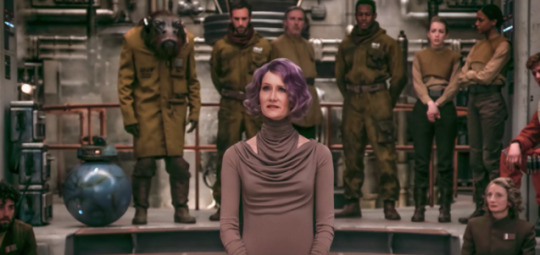
Holdo is held up as someone that people in the Resistance are supposed to respect as a leader, and yet she refuses to tell the very people she’s leading what their plan is, citing Poe’s earlier reckless actions as an excuse. Even according to the Navy’s Leadership Principles, keeping your people informed is the second principle on the list. In other words? It’s pretty important. Vice Admiral Holdo’s refusal to do so is driven by petty motives, and while Poe is painted as ridiculous and childish the entire movie, he’s actually proven right when the First Order does the very thing he was afraid they would do.
One of the “lessons” from Poe’s story line is you should always blindly trust authority figures even when they provide no valid reason for doing so, and this is an extremely dangerous and topic example to set, especially in today’s society when people of color are so often made targets of police brutality, which again feeds back into the movie’s underlying theme of systematic racism.
Holdo herself seeks redemption from her mistakes by turning around and ramming her ship through theirs – an admittedly cool move, although it would be cooler had we not seen Admiral Raddus suggest the idea of plowing through a ship no more than a year earlier – and dies so that Leia can explain to Poe that Holdo was a good leader (without really stating how) because she was more concerned with fulfilling the mission without getting credit for it.
The problem with this? It means that Holdo had to die in order for Poe to “understand” what it meant to be a leader. This doesn’t work for two reasons. For one, Poe is a decorated Commander who had already served as a leader in the Republic Navy before joining the Resistance. Painting him as a cocky flyboy with a chip on his shoulder just doesn’t work when it goes against everything we’ve been told about his character. The “lesson” Poe was supposed to learn was one he already knew.
The second problem is that it meant that Holdo had to die in order for Poe to learn this lesson. In other words, we’re back to that age-old trope: a woman had to die in order to advance the plot/characterization of a male character.
And that’s where we get to our final topic: sexism. For a movie that preaches itself as so overtly feminist, it is rich with sexist undertones that are immediately apparent on the surface. Most of these are notably in the interactions between Rey and Kylo Ren, but there’s another character that I wanted to touch upon first. Rose Tico.

Despite Kelly Marie Tran’s boundless enthusiasm for her role, Rose Tico is ultimately underwhelming as a character. Despite mourning the death of her sister, her ultimate presence in the film seemed to be reduced to a girl with a bad crush on Finn.
I’ve already touched upon how poorly Rose treats Finn, but Rose herself seems to have gotten the short end of the stick in terms of the plot. Her character exists only to serve Rian’s image that your heroes aren’t what they seem, tazing Finn when she sees him trying to escape. From then on, Rose’s status seems to be downgraded to “Finn’s crush” as seen in the description of this deleted scene:
Originally, the film spent some more time clarifying the dynamic between Rey and Finn, and further setting up Rose’s crush on the Resistance “hero.” Rose chastises Finn for “pining for Rey,” which Finn quickly denies, claiming that he was “raised to fight” and that he finally found something to fight for in his friend, Rey. “Whatever,” responds Rose with a hint of jealousy.
Rose’s constant nagging of Finn and being catty about Rey enforces a negative female stereotype that has no business in a Hollywood blockbuster that claims to be catered to young girls, especially when it seems that Rose’s role has been reduced to working the love triangle dynamic between Finn and Rey. This seems like it could only lead to a destructive end for the character, especially considering how she attempts to save Finn’s life by almost sacrificing her own at the end of the film. Rose presents us once again with the trope that a female character must sacrifice herself in order to advance the plot of the male character, in this case, to prove her love for him. It’s a frustrating trope, made all the more exhausting when you consider what her role might be in the next film.

If you focus on the look Rey gives Finn putting a blanket over the unconscious Rose, it sets up tension for the next film: assuming Rey and Rose engage in competition for Finn’s attention, putting the two girls at odds with one another.
Because if the sexism in this movie wasn’t blatant enough, that’s just what Star Wars needs: two girls fighting over a guy. While frustrating to watch, it’s also extremely degrading to both characters and reduces both of their arcs into nothing more than instruments to direct the story of a male character.
Hopefully JJ will take the next episode in a different direction, but the damage that has already occurred in this film cannot be understated. There is, unfortunately, a lot of ground to cover regarding Rey’s story, so I’m going to start with the most visually striking one: Rey’s costume.
In The Last Jedi, Rey adopts what has been dubbed her “Jedi Training” outfit, trading out her three signature buns for a simpler hairstyle and trading out her light Jedi garb for a bit of a darker color. It’s a way for Rey to separate herself from the girl we saw crying desperately over her parent’s retreating ship on Jakku, keeping the same appearance a decade later in the hopes that they would come back to recognize her.
Many who speculated that Rey would undergo this physical transition after she discovered the true origin of her parents and worked to free herself of that disappointment found themselves disappointed. Rey didn’t change her clothes and her hair after she learned about her parentage from Kylo Ren, she learned about it after.
Despite being wet from the rain, another reason for this change is that she was shipping herself off in a box to see Kylo Ren, prompting those who want them to be romantically involved to start citing the Snow White parallels. It’s not hard to believe that the reason for this change was to make Rey appear more feminine. With her hair down, she looks more like a girl and less like the hardened warrior who had to fend for herself back on Jakku.

But wait, wouldn’t that mean that Rey’s entire role in the movie basically focused on developing Kylo Ren as a character? It does, and you wouldn’t be wrong to think that way. Even during Rey’s training sessions with Luke, the conversation is always geared back to Kylo Ren in some way, whether it’s Luke talking about his past or Rey assuring Luke that she won’t end up like Kylo. Either way, we hear Kylo’s name spoken more times between them than we actually hear anything about the Jedi or the things that Luke learned about the Force on his travels (say, Pillio, perhaps?)
It becomes clear early on that despite Rian Johnson saying that the film isn’t about what the fans want, that certain scenes were added in to appeal to a certain demographic. For example, Adam Driver’s uncomfortable shirtless scene?
Rian himself says that the scene had a “specific purpose” of creating an increasing feeling of “uncomfortable intimacy.” In other words, Kylo Ren’s shirtless scene is basically synonymous with a dick pic: no one asked for it, but there it is, one of the most subtle forms of sexual harassment. Think about this another way: if Rey’s character was really a boy, would the shirtless scene still be present? Or necessary?
Hint: it’s not.
The fact that Rey’s character only seems to exist to play a role in Kylo’s story is concerning, considering that she is touted as the protagonist of the sequel trilogy. Even though she witnessed him murder Han Solo no more than a few days prior, she becomes emotionally intimate with him pretty quickly, opening up to him about the strange experiences she had in the “dark place” beneath the island.
And therein lies the problem. When they touched hands, Snoke gave her a vision of Kylo Ren turning back to the light side to compel her to rush off to the Supremacy in the hopes that she could turn Kylo Ren back to the light and turn the tide of the war.
There’s only one problem with that.
It’s not her problem.

Rey was a civilian. As Kylo Ren himself told her, “You have no place in this story.” She has no part in the conflict between the First Order and the Resistance, and yet she was swept up in it all the same. It shouldn’t be necessary for her to rush off and turn the tide of the war, and while it fits with the Star Wars theme of how one person can make a difference, the trope that a woman must rush off and sacrifice herself in order to progress a man’s character and offer him redemption has been a long-running frustrating trope. If Rey wants to help the Resistance, that’s her choice, but it shouldn’t be necessary to rush off and try to save the person who kidnapped and abused her.
It’s one of the things that makes any sort of Kylo Ren and Rey team-up so off-putting. In The Force Awakens, he kidnaps her and invades her mind in order to try to find the location of the map. After she escapes, he confronts her in the forest, throwing her into a tree several feet up in the air in a move that could have potentially killed her. Then she wakes up just in time to watch him slice through Finn in a move that could have killed him.
Oh, and did I forget to mention how she watched him murder a defenseless Han Solo right before her eyes only moments before? The man who, as Kylo himself taunted, presented a father figure that she never had?
In other words, Rey has absolutely no reason to trust Kylo Ren. She has no reason to even want him to get redemption. For all of Rian’s talk about how he wanted to keep this film “morally grey,” trying to make a genocidal murderer relateable, or even redeemable, was not a step in the right direction. Wouldn’t it have been more compelling to watch Rey wrestle with the ramifications of eliminating Kylo Ren once and for all? Instead of trying to find redemption for the dark side, wouldn’t it have been far more interesting to explore a situation in which Rey realizes that good people must sometimes do bad things for an overall good to result?

Perhaps, but that’s not the film we got. Instead we got a team-up between Kylo Ren and Rey where, moments after they work together, their alliance is quickly severed. Rey asks Kylo to call off the attack that is sure to eliminate the Resistance, including Finn. Kylo, however, refuses and tells her to move on and join him in ruling. He tells her, “You come from nothing. You’re nothing. But not to me.”
Fortunately Rey grabs the lightsaber and rejects his offer, and the final scene of her closing the Millennium Falcon doors on him seems to confirm that she has severed her connection for good. The problem? The damage has already been done.
Rian Johnson has already set up the Kylo Ren and Rey dynamic to be potentially romantic, between the shirtless scene, the hand touching scene, to be filled with an uncomfortable kind of sexual tension between the girl that declared to Maz, “I don’t want a part of any of this” and the man that murdered his father.
As troubling as that notion is, it does get worse. Kylo Ren tells Rey, “You come from nothing. You are nothing. But not to me.”
The problem is that Kylo Ren’s frequent gaslighting and emotional manipulation throughout the two films reaches its climax: he has discarded Snoke and wants to use the powerful, yet naive Rey, to further his own power. Still, the sexual if not romantic implications are there, pushed along by a group of shippers that call themselves “Reylos,” who desperately seek for Rey to redeem Kylo through, well, you get the idea.

There are several problems with this. One of the first ones is the fact that Kylo Ren is 32 years old, whereas Rey is only 19. While many are quick to claim that age is just a number, Rey is emotionally immature, having been isolated on Jakku for most of her life. There is absolutely no good reason to try to push her into any sort of relationship with someone who is so destructive, especially when the sole reason for doing so is to help Kylo Ren find redemption.
The line, “You’re nothing…but not to me” is a quote that unfortunately most women have heard far too often. It’s an emotional manipulation tactic in order to try to isolate a woman from her friends and family until she only relies on her abuser for support, and this is exactly what Kylo Ren is trying to do here. With Luke unwilling to teach her, Kylo wants Rey to rely on him, and solely him, so that he can use her power and manipulate her to further his own goals (which is to lead the First Order to…conquer the galaxy? It’s not quite clear.)
It’s a frightening message, especially when you think about who this movie is supposedly marketed to. Think about how many children dressed up as Rey for Halloween. How do we explain to girls that the man who killed Han Solo, the man who emotionally manipulated her and tried to use her just to validate himself, is the person that she should ultimately fall in love with? It paints a dangerous picture that girls internalize before they have enough experience to make their own decisions regarding their own relationships.

Remember Edward Cullen’s creepy manipulation in Twilight? Apparently that’s crept into Star Wars as well.
And this gets to the heart of the overall problem. The Last Jedi is ultimately soaked in sexism, misogyny and racism, and yet Kathleen Kennedy and Bob Iger widely praised the film before its release. How can Kathleen Kennedy, who said that she was proud to have a feminist icon in Rey, be willing to reduce Rey’s entire story to “the love interest?” If the executives and storygroup approved such blatant racism and actively worked to rewrite characters in order to fit their stereotypical narrative, what hope do we have that the next trilogy will be better, especially when they gave Rian Johnson full control over its content?
Rian himself believes that Darth Vader was worse than Kylo Ren, and while that is probably a conversation as controversial as the movie itself, Rian still wholeheartedly believes that despite what happened in The Last Jedi, that Kylo Ren can be redeemed. It shows that the storyline that JJ Abrams set up has been reduced to simply furthering the narrative of the white villain, and the rest of the characters are simply players in his story, which is why they exist as nothing more than stereotypes in Rian Johnson’s version of Star Wars.
And that’s the disappointment. While The Force Awakens received criticism for being too similar to its predecessor, A New Hope, JJ did set up some interesting and mysterious characters. While Captain Phasma’s role was ultimately underwhelming, fans were assured that she would have a much bigger role to play in Rian Johnson’s world.

Unfortunately, we all know how that turned out.
Phasma’s quick dismissal wasn’t the only disappointment. Snoke was killed off without any satisfying explanation to who he was or even what he wanted the First Order to do. The Knights of Ren, which were mentioned in The Force Awakens and played a role in Rey’s vision, disappeared from the narrative entirely, instead being replaced by Rian’s Praetorian Guards.
For many, Luke Skywalker’s return was the biggest disappointment. Mark has made no secret in recent weeks citing how he didn’t agree with Rian Johnson’s vision of Luke and how he wished George Lucas had directed the sequel trilogy instead, a mere three days before The Last Jedi hit theatres. It fits into Rian Johnson’s grim version of reality: our heroes can be defeated, and idolizing legends is ultimately unsettling and disappointing when faced with reality.
But by disappearing into the Force, did Luke not himself become a legend, the very thing that Rian seems to chide against? The film’s “message” seems to give audiences such mixed signals, it’s not surprising that audiences claim that the film seemed better after a second viewing: basic elements of the plot just doesn’t make sense, like how the First Order has suddenly developed hyperspace tracking despite the film only taking place a few days after the events of The Force Awakens.
There are other plot holes that point out the flaws in logic in the story: where did Rey learn to swim on Jakku? How can bombers drop bombs in space when there’s no gravity for the bombs to fall? Since space exists in three dimensions, why didn’t the First Order just have a ship drop out into hyperspace in front of the Resistance Star Cruiser and blow it to bits? And why was General Hux, a serious, straight-faced villain in The Force Awakens, who ordered the destruction of the Hosnian System, delegated to a comedic side role who’s only function was to serve as a cheap laugh and be the butt of an awkward your mom joke? Instead of using the antagonism between Kylo Ren and General Hux to show the crumbling of the First Order and how the small band of Resistance heroes we’re left with at the end of the movie might stand a chance against them, it seems that the First Order’s army, which was flowing with Nazi imagery in The Force Awakens has just been reduced to campy slapstick humor.
Despite these obvious problems, the most glaring ones still remain in the fact that Star Wars is a film that claims to market itself to the people it exploits and ultimately rejects. It’s no wonder that merchandise and ticket sales have dropped when the movie is back to focusing on a white male lead, like so many other before it. Kylo Ren tells Rey that you have no part in this story, that she doesn’t belong – something that minorities, women, and the LGBTQ+ community have been hearing their whole lives.

But if this movie isn’t made for these people, then why does Disney keep trying to insist that it is? Most people who have been critical of the film have been met with the chorus of, “You’re just upset that you didn’t get what you wanted” as if it’s somehow wrong to expect more from what you receive. The story was set up so that we would get answers. How someone as powerful as Snoke managed to manipulate Kylo Ren from the womb and grow the First Order from the seeds of the Empire, Phasma’s increased involvement, and especially the question of Rey’s parentage, has been dangled in front of us like a carrot on a stick for the past two years, and it’s ultimately unsatisfying to see all those threads being clipped off and brushed aside with a, “Oh! It didn’t even matter!”
If it didn’t matter, then why feel the need to keep up the secrecy and suspense for two years, when the final product is ultimately disappointing? (Point not withstanding, Kylo Ren tells Rey that Snoke showed him that her parents were buried in a pauper’s grave on Jakku. Why her parents would actually return to Jakku, or whether Snoke was actually telling the truth, is a matter that JJ has yet to resolve.)
It’s not wrong to be a critical consumer of the media that we consume. It’s not wrong to say that we deserve something better. Minorities and women can and should demand to be treated with more respect than they were shown in this film, and the overwhelming amount of racism and misogyny in this film is something that most avid fans of the film have not provided an answer for.
People who claim that The Last Jedi is a good movie, while at the same time acknowledging how deeply misogynistic and racist it is, are contributing to the larger problem we have as a society. It’s saying, “I know it’s racist and misogynistic, but it entertained me, so I’m okay with it.”
It might just be fiction. It might just be a story. But all media we consume influences us, subconsciously or not, in ways that we may not even be aware of. Star Wars may not be real. These characters may not be real.
But it still affects how you feel, and that seems pretty real to me.
#anti-tlj#anti-the last jedi#anti-disney star wars#star wars negativity#star wars sequel negativity#star wars#why the last jedi isn't just bad - it's toxic#last jedi toxic#the last jedi is toxic#tlj toxic#tlj is toxic#scavenger's holocron
20 notes
·
View notes